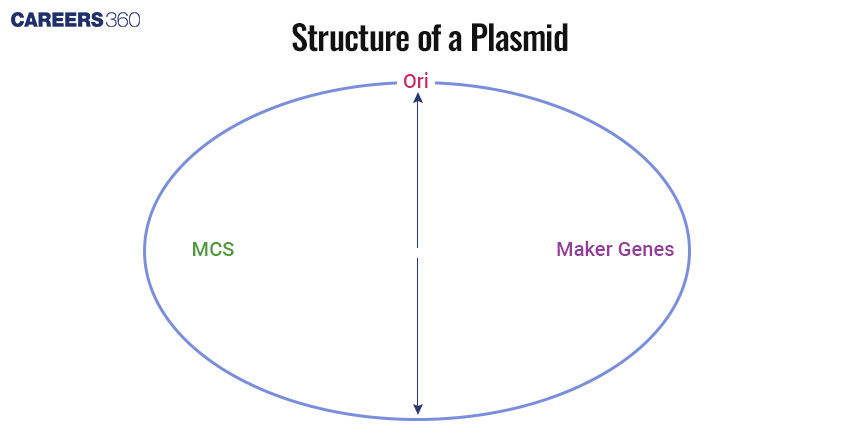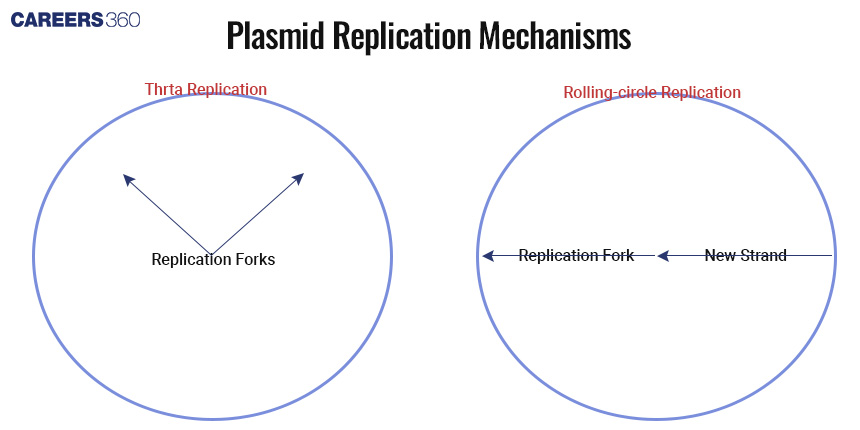Plasmid: Definition, Types, Examples, Diagram, Technique
Plasmid Definition
Plasmids are small, circular, double-stranded DNA molecules that replicate independently of the chromosomal DNA. Although mostly found in bacteria, plasmids may also be found in archaea and, in some cases, in eukaryotic organisms. Such independence in replication makes them of great importance for genetic studies and biotechnological applications.
What is a Plasmid?
Plasmids are central to genetic engineering and biotechnology. Small, usually circular DNA molecules autonomously duplicate genetic material, plasmids are important in gene cloning, gene therapy, and the creation of genetically modified organisms. This paper discusses plasmids in general, their structure, how they replicate, their different types, and their important applications in modern science.
Plasmids were first discovered in the middle of the 20th century. It was their discovery that revolutionised molecular biology and gave researchers a tool for gene manipulation that allowed them to obtain much more in-depth information about how genetic systems work.
Natural Occurrences in Bacteria
Bacterial plasmids are vectors for the transport of numerous beneficial traits, which include, but are not limited to, antibiotic resistance, metabolic capabilities, and virulence factors. These aid in survival and adaptation in different environments.
Structure and Function of Plasmids
Plasmids are circular DNA molecules of a few kilobase pairs (kbp) up to hundreds of kbp. They mainly consist of an origin of replication (Ori), multiple cloning sites (MCS), and selectable marker genes.
Diagram: Structure of a Plasmid

Importance in Genetic Studies and Biotechnology
Plasmids are vital to genetic engineering as vectors. Plasmids are vectors that easily transport foreign DNA into host cells, allowing easy gene cloning, recombinant DNA technology, and subsequent recombinant protein expression.
Detailed Comparison of Plasmids
Feature | Description | Examples and Specificity |
Definition | Small, circular, double-stranded DNA molecules that are self-replicating and have no reliance on chromosomal DNA. | Found in bacteria and some eukaryotes. |
Structure | Circular DNA ranges from a few kbp to hundreds of kbp in size. | Varies in size and gene number. |
Replication | Independently replicates using its origin of replication (Ori). | Mechanisms that operate are theta replication and rolling-circle replication. |
Types | Classified based on function: fertility (F) plasmids, resistance (R) plasmids, col plasmids, degradative plasmids, and virulence plasmids. | F plasmids for conjugation; R plasmids for antibiotic resistance; col plasmids produce bacteriocins. |
Function | carry properties like antibiotic resistance, metabolic abilities, and virulence factors. | Antibiotic resistance genes, toxic production, and metabolic pathways for substances that are atypical. |
Applications | Used as vectors for gene cloning, gene therapy, and production of recombinant proteins. | Examples: pBR322, pUC19, used in cloning, and pGEX for protein expression. |
Mechanisms of Plasmid Replication
Plasmids replicate autonomously from the chromosomal DNA with the help of their origins of replication. They mainly do this using two main mechanisms:
Theta Replication: This is a mechanism of bidirectional replication similar to the one used during the replication of chromosomal DNA.
Rolling-circle Replication: This form replicates into numerous plasmid copies through the unidirectional process.
Diagram: Plasmid Replication Mechanisms

Regulation of Plasmid Copy Number
The copy number of plasmids in a host cell can vary from low to high. High-copy plasmids replicate extensively, resulting in a large number of copies per cell, while low-copy plasmids replicate less frequently.
Types of Plasmids
The types of Plasmids are as follows:
Fertility (F) Plasmids
F plasmids facilitate bacterial conjugation, a process by which genetic material is transferred from one bacterium to another.
Resistance (R) Plasmids
The genes present on the R plasmid are responsible for the resistance to the antibiotic and thus make the R plasmids very vital in the spread of antibiotic resistance among bacterial populations.
Col Plasmids
These plasmids encode the production of bacteriocins—proteins that kill other bacteria, giving the host bacterium a competitive advantage.
Degradative Plasmids
Catabolic plasmids have genes that give the host bacteria the ability to break down a range of unusual substances, including toluene or salicylic acid.
Virulence Plasmids
Virulence plasmids, on the other hand, encode genes that enhance the infectious nature and survival of the bacteria in the host.
Plasmids in Genetic Engineering
Learn about the importance of plasmids in genetic engineering:
Role as Vectors in Cloning
Plasmids are vectors into host cells, in which foreign genes have been inserted. This is done by creating recombinant DNA in which DNA from more than one source is combined.
Construction of Recombinant DNA
Recombinant DNA is artificially constructed. A gene of interest is inserted into a plasmid vector and then introduced to a host cell for expression and replication.
Recommended Video For Plasmids
Applications of Plasmids
The application of plasmids are as:
Gene Cloning
Plasmids are the very basic tools for gene cloning; through them, it becomes possible for scientists to replicate and study specific genes
Protein Production
Recombinant plasmids can be used in host cells to express proteins, like therapeutic proteins and enzymes.
Gene Therapy
Plasmids are the vectors used in gene therapy. Through the vector, therapeutic genes are delivered into the patient's cells, with the desired effect of curing inherited diseases.
Creation of Genetically Modified Organisms (GMOs)
Plasmids are used to create GMOs by introducing new traits into organisms, enhancing their agricultural or industrial value.
Benefits in Research and Biotechnology
Due to the ease of manipulation and replication, plasmids are invaluable for genetic engineering and biotechnology. They allow new traits to be introduced and detailed genetic studies to be conducted very quickly.
Limitations and Challenges in Plasmid Use
Despite these advantages, plasmids can be unstable and can confer metabolic burden to the host cell; moreover, they may transfer undesirable traits by horizontal gene transfer.
Advances in Plasmid Research
Some advances in plasmids research are given :
Synthetic Plasmids
Advances in synthetic biology have given rise to engineered synthetic plasmids, designed for specific applications both in research and industry.
CRISPR-Cas9 and Plasmid Vectors
CRISPR-Cas9 systems delivered through plasmids have revolutionized genome editing by permitting specific modifications to be made to DNA sequences.
Practical Considerations
Some practical use of plasmids are:
Plasmid Extraction and Purification Techniques
Common laboratory techniques for extracting and purifying plasmids include alkaline lysis, column-based purification, and centrifugation using a caesium chloride gradient.
Troubleshooting Issues in Plasmid-Based Experiments
Common issues to be considered with plasmid-based experiments include low yield, contamination, and plasmid instability.
Conclusion
Plasmids have become indispensable in contemporary biology, thereby allowing progress to be made in the fields of genetic manipulation, gene therapy, and biotechnology. Their versatility and simplicity of use make them a continuous driving force of research and innovative processes that foretell exciting occurrences in the future.
Frequently Asked Questions (FAQs)
Plasmids can be used as vectors for the introduction of foreign DNA into host cells, which enables gene cloning and protein production.
Various kinds of plasmids include fertility plasmids, resistance plasmids, col plasmids, degradative plasmids, and virulence plasmids, each with characteristic functions.
Plasmids are vital for recombinant DNA, protein production, and genetically modified organism development.
General methods include alkaline lysis, boiling lysis, and commercial kits for extracting plasmids.